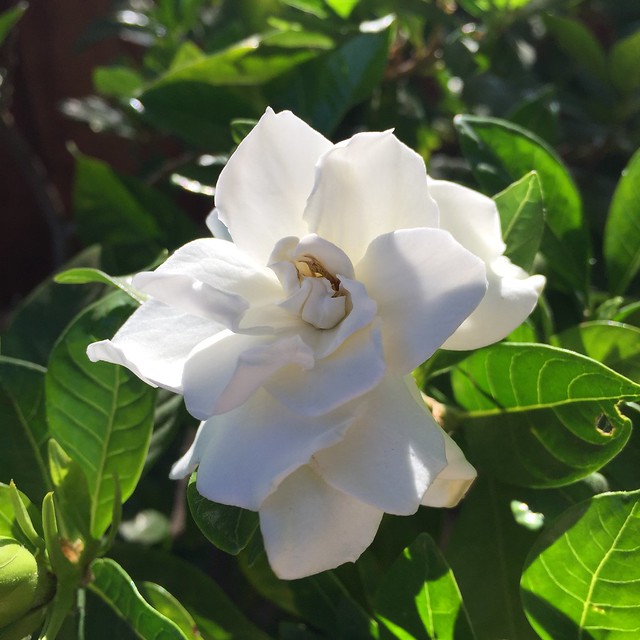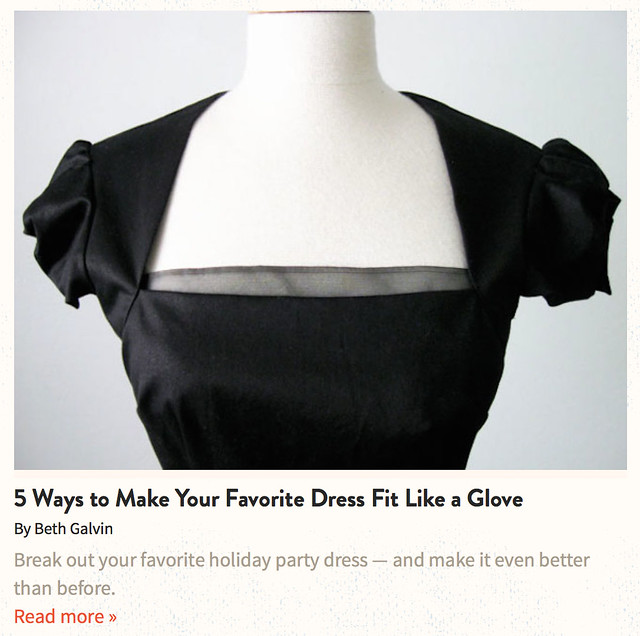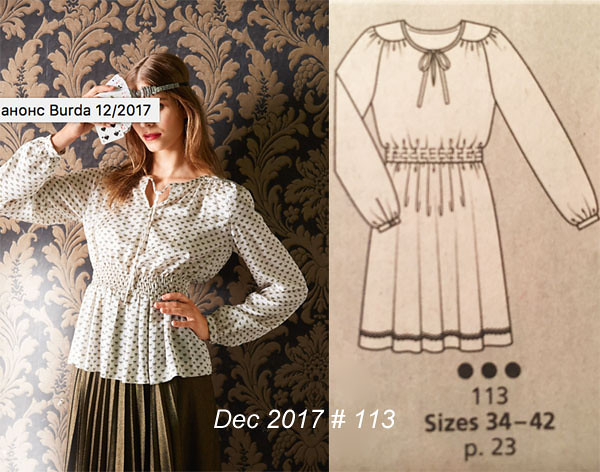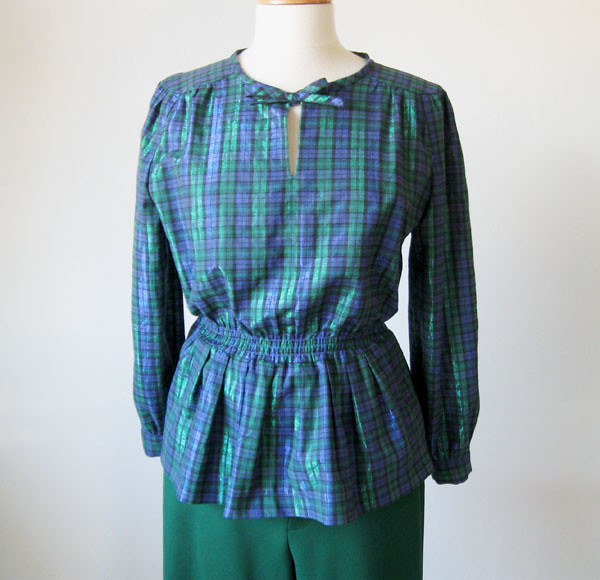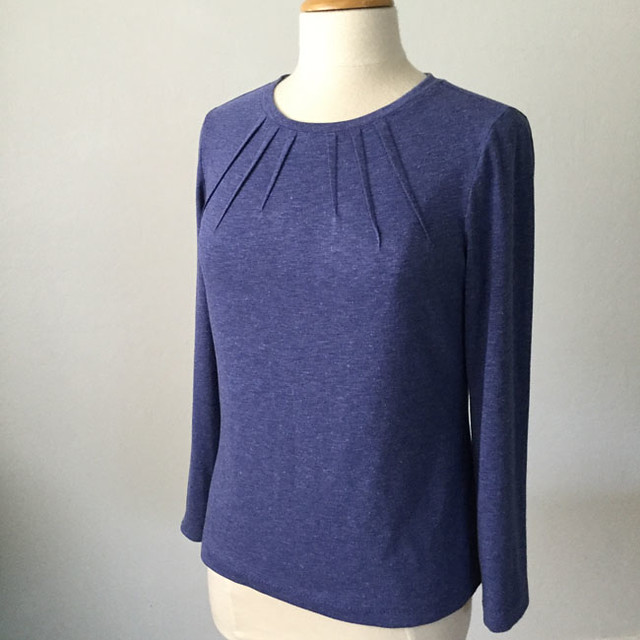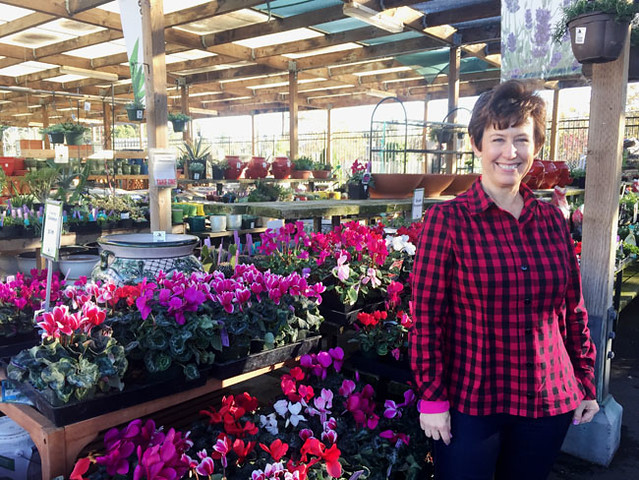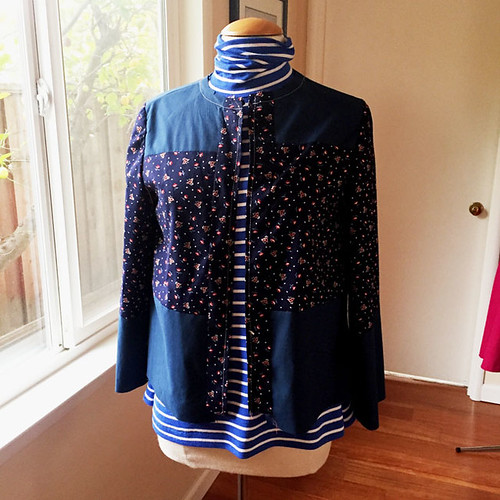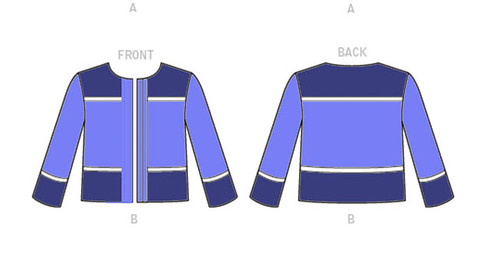If someone asked me what is my favorite thing to sew, I guess the answer would be jackets and coats. Particularly the wool kind. I think making a wool jacket is my version of knitting, a comfortable, soothing, repetitive series of steps that are calming and relaxing. Which might sound odd to a lot of you. I think once you get comfortable with any skill it feels that way. You can be learning to sew, or making bread, or speaking a new language, or skiing, or hitting a golf ball, or any other thing that takes practice, purpose and a desire to improve. But one day you will do it and feel comfortable and relaxed and realize that you are doing this thing for fun and not thinking too much about the how. I suppose what I'm describing is often called being in the mental state of flow - fully immersed, involved, enjoying the activity. Sewing is generally this type of activity for me, and on a good day some of my other pursuits can get there as well. I think a key to feeling this way about sewing is both practicing, learning from mistakes, as well as letting go a bit, not being consumed by the idea of making a mistake. I tell people it's not surgery, it's only cloth and there is always more. Does that seem contradictory? To both focus deeply and let go at the same time?
Back to coats. For my jacket/coat making class at Hello Stitch one of the patterns I recommended was the Bamboo coat from Waffle Patterns. We were looking for a coat or jacket that had a loose and easy fit so as to take that out of the equation, and allow people to concentrate on the technical aspects of sewing and minimize the time needed for fit adjustments. I wanted to sew my own version to see how the instructions were and where there might be some difficulties.
And in fact I sewed this back in October so at the time I had a lot of thoughts, that I should have written down! So just a few impressions remain. The major impression is that it is Drab with a capital D! I like tweedy fabrics, I like a touch of black but there is something about the combo of this fabric with the menswear style that just doesn't give me a thrill. However - a friend of mine with vivid red hair tried it on and it looks great on her. Picture a shoulder length curly gorgeous red-headed bob haircut, coat worn with skinny black jeans and ankle boots and a black leather bag. A perfect slouchy-cool city look. At least that was my impression. I'm always happy when one of my handmade items that doesn't work for me is perfect for someone else!
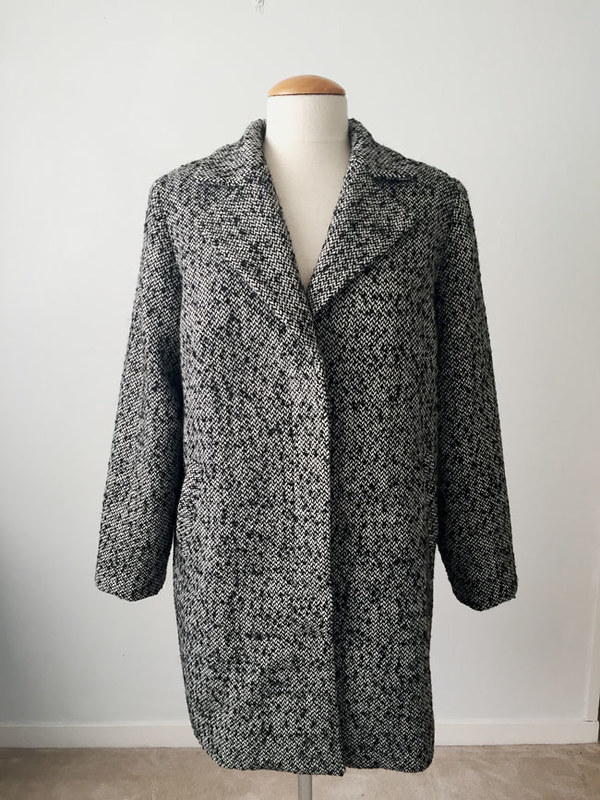
My main recollection about sewing this is that following instructions to do details like lapels and welt pockets is kind of difficult. By that I mean that typically I don't read any instructions, and I just do the pattern markings on the fabric and then that's it. I decide where/what to interface, how to sew the pockets or welts, where to put the buttonholes. But for this one I followed the instructions and felt that they were both very thorough and at the same time tricky to understand.
# 1 Positive about this pattern: The ROLL LINE is marked on the lapel and under collar. Can I say hallelujah? This is my top pet peeve on coat patterns, that very few patterns (even extremely tailored and detailed Vogue or Burda patterns) include the roll line. A few Vogues do and I think they should try to include on on things that are meant to be made of wool. Anyway this pattern has it and you can see that break in the interfacing on what is the under collar. The break there induces the collar to fold (roll) at just the right place.
#2 Positive - lots of interfacing. The instructions are quite detailed on where to put the interfacing, and I think that is what makes the difference between achieving a well-made coat and one that looks, well, homemade. And it is such an easy step but interfacing supports the fabric and gives all the details the oomph needed to retain creases and shape.


This pattern has long angled darts which add a little bit of bust and waist shaping without taking away that menswear look.

Another thing I really liked about this pattern is the hidden buttonhole placket. What a great detail in a coat, it solves the problem of making buttonholes in several thick layers of wool coating because you use a lining inside the placket. Consequently it is one layer of wool there.
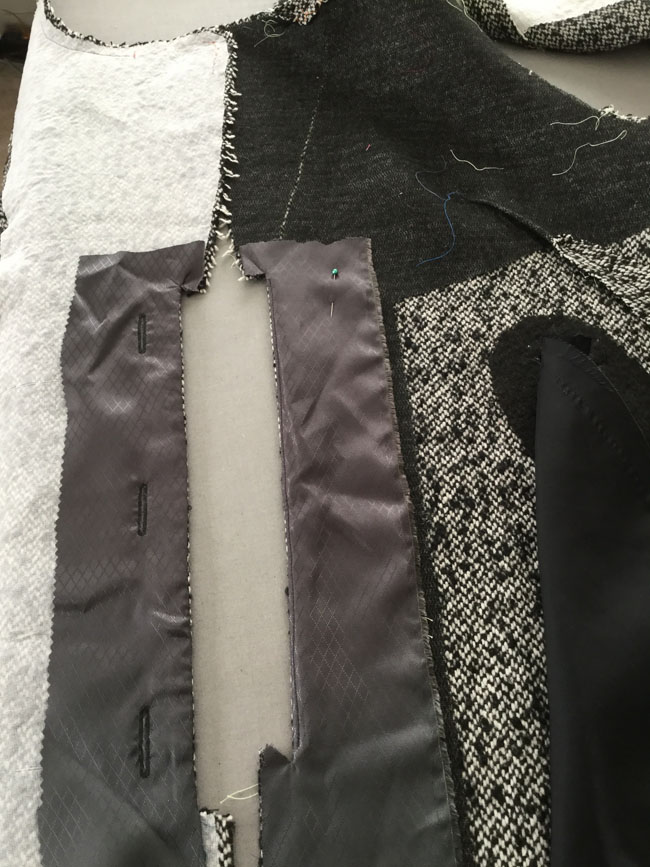
And it's only right to include this photo which shows that it might be a good idea for me to look at the instructions more closely - which I thought I was doing. But this hidden buttonhole placket was going so well, and I found some buttons so I just sat down and made the buttonholes. In the WRONG directions. Yep, coat and jacket buttonholes are supposed to be horizontal not vertical. Think about every coat you have had, easier to button if they are horizontal and it keeps the coat closed better. OH well. Can't win 'em all. And I used a lovely piece of of grey that was in my lining scrap bin for the placket facings. I love this type of lining and never see it in the stores anymore. Acetate, kind of hefty and perfect for coats/jackets. Usually with a woven pattern.

The finished coat front is very nice, and the placket instructions were pretty good. (Although I've used this construction method plenty of times before, in my class it was a bit of puzzle for the person who hadn't encountered it before. But a good learning experience).
The part where I put down the instructions and did my own thing was the welt pocket. While the instructions - if you follow them exactly, result in a decent welt pocket with the pocket bag attached - whew they are a slog. A couple of students did them in the class and I hadn't gotten to that point in my coat. So I decided to just do it my own way. On the right is the pocket piece provided by the pattern, where you stitch it partly on, and then attach the pocket bags, and then fold the sides in and hand stitch some sections.

Ah, no. that seemed way too fussy and not guaranteed to get two matching pockets. So I removed that piece shown on the right. made a wide single welt and used that to make a standard welt pocket. Much better.

Note that I used lining for the back of the welt, much easier to achieve a crisp edge if it isn't two layers of the wool which was very springy.

The back vent is a nice detail. I put some shoulder pads in, very small ones just to keep it from being a bit droopy. Not sure if when I took this picture I had added them yet.
And this is after a very long day at the Hello Stitch Studio - I think this was a day with a mini-class on zippers in the morning and then a knit top class in the afternoon. But I wanted to have a picture with the coat on someone. Also note - I sewed the coat in size 40 with no changes - and the sleeves are way too long for my baby length arms.

We have another session of the
Coat/Jacket making class in December, (weekend class 10am-4pm on Dec 16-17) as a couple of people had to postpone from our first in October. Consequently there are a couple of spaces still open so if you have a coat or jacket that you want to do here is the link. The recommended patterns are just a suggestion, email me if you have something else you are thinking of using in the class.
Here's a
link to all my classes. One I'm particularly looking forward to is a class we are calling "
Pattern Basics: How to read a sewing pattern". I'm planning to cover how to choose a pattern, measuring yourself, how to select your size, matching fabric with pattern, and then we'll open up some patterns and review what's printed, both in the instructions and on the pattern pieces. Plus some tips on cutting out and marking. I think this will be great for beginners or as a refresher.
In December I plan to do some selfish sewing - including cutting into "my precious" which is a blue two-sided wool that I bought at Mood Fabrics NY last year and has been tormenting me for these many months with the "what should I use it for" question. But I think I've cracked it. It's a lot brighter blue, this photo makes it looks grey.

So that's the latest, I was outside a while ago doing a little autumn weed pulling and pansy planting when the garden lights came on - which means it is too dark to be out there trying to tell weeds from real plants. Is winter over yet? OK, I know it actually hasn't started yet but you know I'm ready for spring.
However I can't complain - even though it has been a bit chilly, no frost yet and I still have lots of gardenias in bloom.
Happy Thanksgiving Sewing,
Beth
